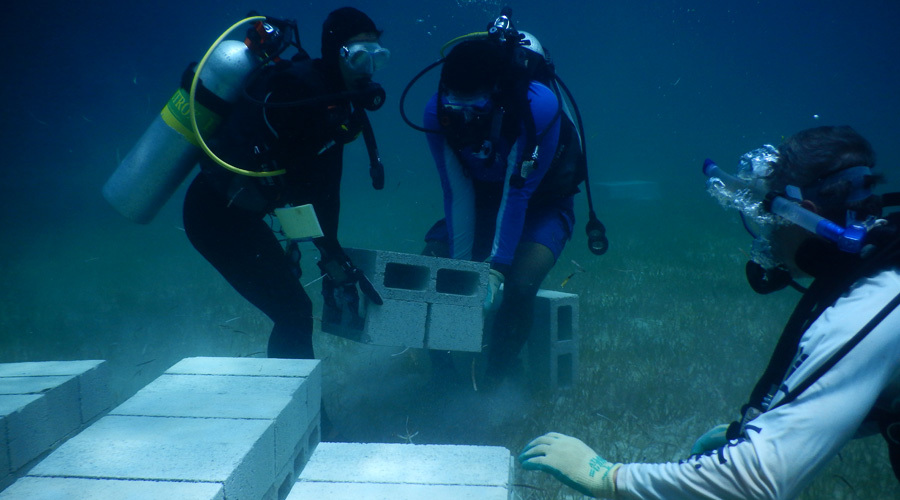
Artificial Reefs
Artificial reefs are emerging as a primary tool to enhance marine fisheries. Yet the field remains controversial, as it is hard to definitively prove that these reefs really produce “new” fish biomass, not just attracting fish that would otherwise live in different habitats. Our recent review paper tackles this question, suggesting an ecosystem ecology perspective is one means to address this critical management question.
We use cinder blocks, glued together with underwater epoxy, as our experimental units (primarily in seagrass beds of The Bahamas and Haiti). Fish densities are typically very high around the reefs, see this video for instance. We have demonstrated the importance of fish excretion for seagrass productivity, which may shed new light on the “attraction vs. production” debate. We found that reefs supporting higher densities of fishes, are those reefs that have the more “fit” fish. Such data suggest the value of artificial reefs in supporting local fish communities, largely through previously unrecognized mechanistic pathways.
In The Bahamas, we now maintain more than 60 reefs on Abaco, New Providence and West Andros. We also have extended our research program to Haiti, where these reef habitats may be especially valuable for fishery management. We plan to maintain these habitats for years to come (hurricanes willing), providing myriad research opportunities for students and collaborators.
See more information on my colleague Jake Allgeier’s website at the University of Michigan.
